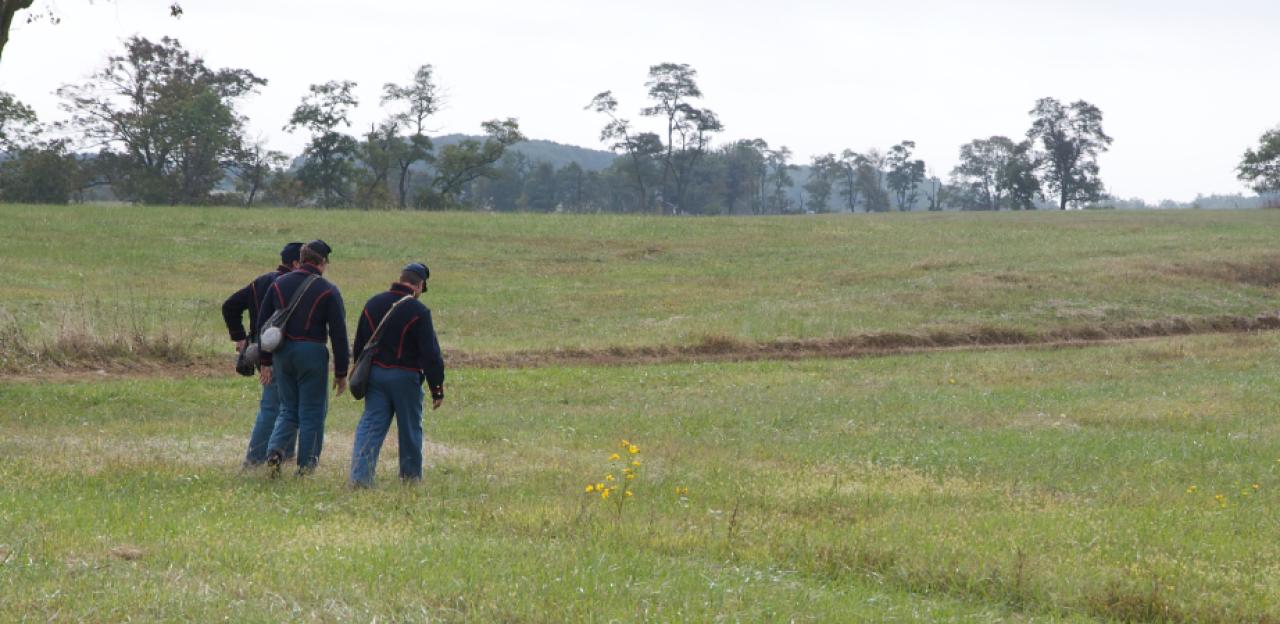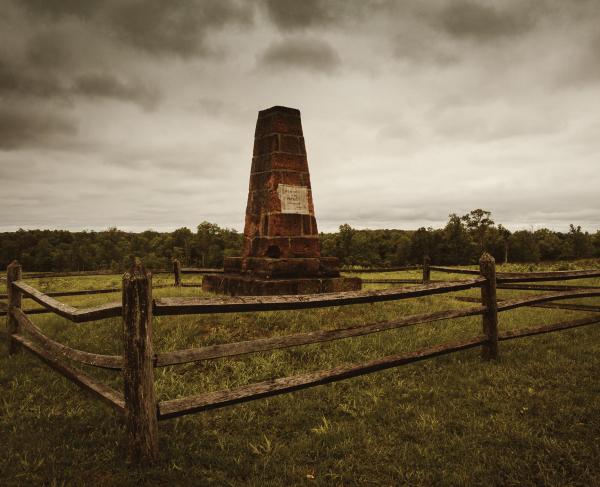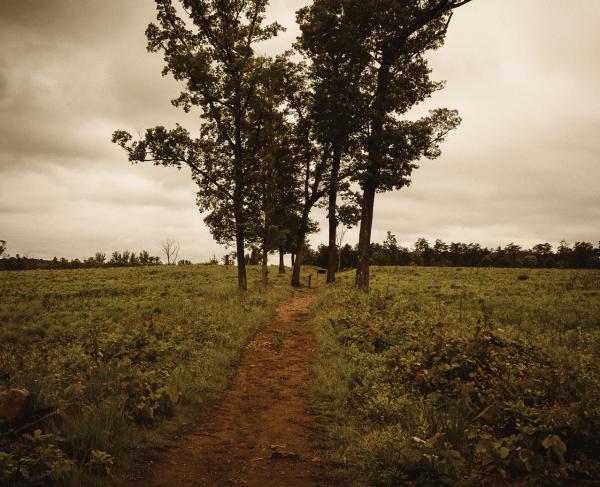The Centennial Reenactment of First Manassas

John Reid
The Centennial Reenactment of the First Battle of Manassas, or Bull Run, was conducted on the battlefield over Henry House Hill in the sweltering heat and humidity of July 1961 — with “combatants” and spectators alike suffering and sweating in the sapping heat like the historic experience 100 years before.
With temperatures in the 90s, numerous cases of heat prostration were reported among both participants and spectators. Accidental and dangerous injuries from the sham battle were also inflicted by unsafe practices on the field. A Confederate reenactor was wounded in the chest by a Minié ball lead skirt from a poorly cleaned musket; luckily his woolen coat absorbed much of the impact, and he escaped with only a livid bruise. A Union reenactor was hospitalized with buttons imbedded in his skin by a cannon discharge, as he fell before the muzzle as the gun was fired.
Centennial Reenactment events covered the entire weekend of July 21-23, 1961. A dress rehearsal on Friday was witnessed by 20,000 spectators; crowds reached 55,000 on Saturday, and 45,000 on Sunday. The occasion included troops arriving on the Southern Railroad at Manassas, a martial parade through Manassas streets on Saturday and artillery parades on the battlefield, with cannon drawn by horses before the recreated battles, the artillery trundled past the grandstands crammed with spectators. Fifty artillery horses were purchased and trained for the reenactment. Public admission fees helped to reimburse reenactors who had travelled to participate in the event and camped on Chinn Ridge.
Some 2,200 National Guard infantry dressed in blue and gray over-shirts and firing clips of modern blank cartridges from M-1 Garand rifles swelled the numbers of “combatants.” Their echoing fusillades created drifts of acrid smoke, the reek of cordite commingled with the sulphur and saltpeter of the reenactors firing black powder cartridges. Occasionally rusted clips and corroded cartridge cases of this “musketry” are still discovered on the battlefield. Although, by today’s standards, the replica uniforms of the reenactors were rather primitive in their authenticity — the Guards carried cardboard “cartridge boxes,” for example — troops of the North-South Skirmish Association carried antique muskets and wore “fledgling efforts at authenticity” in uniform into the choreographed battle.
Reenacting was in its infancy in 1961, and spectacle, rather than safety, was emphasized. Because of the damage to the field from ruts and garbage, the injuries suffered during the reenactment and the sanitation, traffic and other logistical problems that emerged at the Manassas centennial, the National Park Service created guidelines for events on park property. It was determined that “battle reenactments generate an atmosphere inconsistent with the memorial qualities of battlefields” and the practices of opposing lines, rudimentarily trained participants, simulated casualties and sham battles were disallowed. These decisions paved the way for today’s stringent and thoughtful regulations governing historic weapons demonstrations and safety policies to mitigate hazards and promote preservation and interpretation of the past.
This summer, the sesquicentennial anniversary of the first battle will also be observed on Henry House Hill. Historic weapons demonstrations will be offered, but no sham combat or simulated carnage will be witnessed on the battlefield. Living history encampments, soldier life demonstrations and musketry and artillery firings will offer glimpses into the past.
A reenactment, sponsored by Prince William County, will again occur, but beyond the boundaries of the national battlefield park. There, reenactors two and three generations removed from those of the centennial will strive to represent the first battle’s combat. (Learn more about the commemoration events at Manassas »)
Reenacting has evolved since those early days in 1961, and today’s re-enactors — many perhaps better termed “living historians” — are dedicated to authenticity in their impressions and motivated by a conscientious memory of bravery and sacrifice of the soldiers (and civilians) they represent. The virtue of battle reenactments resides in the depiction of masses of troops maneuvering to render a portrayal of combat, and a simulation of casualties. Therein is the danger, as with opposing firing lines (even with blank cartridges) and representations of hand-to-hand combat, safety is jeopardized.
Related Battles
2,896
1,982


